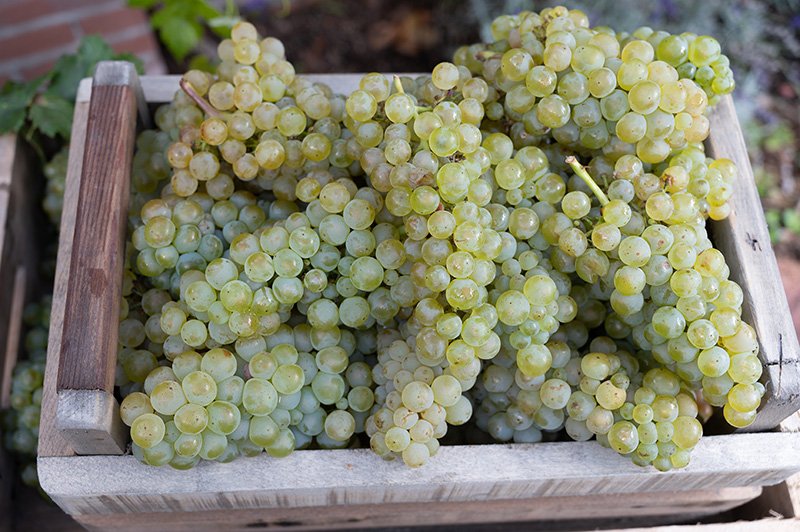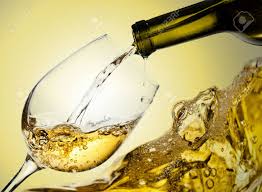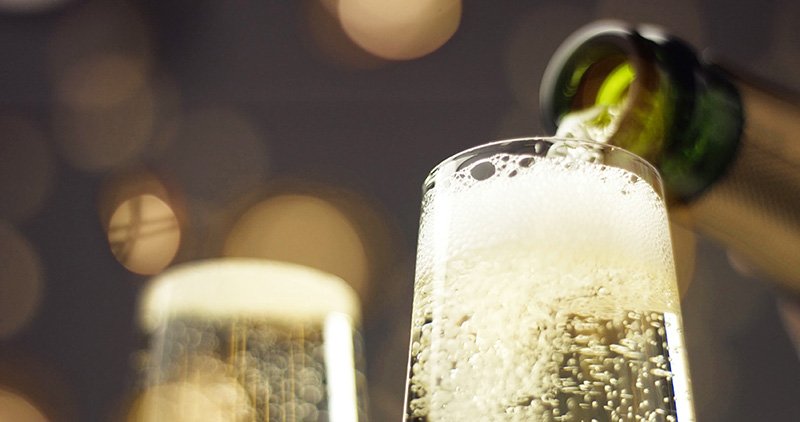What is white wine?
Simply put, a white wine is produced from white or black grapes with white flesh and made in such a way that the juice remains colorless or slightly yellow throughout the winemaking process, which justifies the final color that the we find in the glass.
More precisely, this wine is generally made from white grape varieties such as chardonnay, sauvignon, riesling for the most famous…. But it can also be made from black grapes, as is the case in the Champagne region where Pinot Noir and Pinot Meunier are used to produce white champagnes. In this case, the trick is that the grapes are pressed immediately after harvest so that the skin cannot have time to color the juice.

White wines exist wherever grapevines are found in the world, but we can easily see that geographically, in northern or mountainous regions, the production of dry white wines is largely dominant, because the latter needs less heat than red grapes to ripen.
Of course, even if the more southern regions also produce white wine, it is found in much lower proportions, but above all, the majority of vinifications are made in sweet, syrupy wines, or even in natural or "vinés" wines. »(Muscat, madeira, marsala, for example).
As we have just seen, white wines are extremely varied depending on the grape varieties, geographical areas, climate, winemaking methods, residual sugar level ...
So to help you better understand the differences, I suggest you group these white wines into several categories. They can be dry, sweet (soft or syrupy), mutated, or even sparkling (sparkling, methods, crémants, champagnes).
Buy in Calais Vins a dry white wine ideal wine on a seafood platter
Made from white grape varieties (more rarely red), Its particularity is that it results from total fermentation of the must, which is the product obtained by pressing the grapes, and from which the juice will be obtained.
It is one of the most delicate wines to produce because its balance depends only on acidity and alcohol. This level will be determined according to the harvest period and the sugar content already present in the must. It is by reaching the perfect balance between the two that we can master the production of a dry white wine.

The term dry wine is defined by the residual sugar level, that is to say the sugar in the must which has not been transformed into alcohol during fermentation (sugar level generally less than 4 grams per liter).
Among the best known, Chablis, Sancerre, Condrieu, are among the great dry white wines in France. Without forgetting the yellow wine, a specialty of the jura with Savagnin as a grape, which, contrary to what its color suggests, is not a sweet wine, but probably one of the driest wines in the world.
Dry white wines often have a pleasant acidity which revives the taste buds and combines vegetal, fruity, floral and exotic flavors. Well refreshed, they are suitable for aperitifs or the most refined fish.
Get a Sweet white wine (mellow, syrupy) ideal with foie gras on the Christmas table in Calais
Among the sweet white wines also called “sweet wines” we find a great diversity of sugar content ranging from the lightest (mellow) 10 to 45 gr / l to the most syrupy (syrupy) over 45 gr / l.
These white wines are made from white grapes which, at the time of harvest, have a very high concentration of sugars. The origin of the sugar comes from the grape, the fermentation being stopped before its end.

Many sugar concentration techniques exist outside of chaptalization:
- The "passerillage on stump" or "late harvest" consists of letting the grapes on the vine concentrate in the sun.
- "Passage out of the strain" is a technique of concentrating the grapes before going through the press. The grape is suspended in an attic or spread out on racks, the time that part of the water it contains evaporates. This method is, for example, the raw material for straw wine.
- Botrytis Cinerea known as “noble rot” creates microscopic perforations on the skin of the grape which allows the water to evaporate while retaining the other components. This action causes chemical reactions which induce aromas different from those of grapes. The precocity of Semillon and the weak vigor of the vine favors the action of noble rot. This type of grape is used for the production of sweet wines such as Sauternes, Loupiac, Barsac, Monbazillac ... for the best known, or late harvests, selections of noble grain in Alsace as in Germany and the famous Hungarian Tokay.
- The "freezing of the grape" and its cold pressing only allow the liquid part of the grains to be pressed. The frozen water flakes remain in the press and only the sweet juice flows. This is the principle of ice wine.
These mellow and syrupy wines evoke the aromas of candied fruit, exotic fruit or honey found in Sauternes, Jurançon and Coteaux du Layon. They will do wonders with foie gras, blue cheese and desserts with yellow or white fruits!
Mutated white wine at cheap price in calais
A mutated wine is a wine in which an addition of alcohol has taken place. It was originally in the 13th century a method of improving the preservation of wines during transport.
There are two types depending on the stage of fermentation:
- Natural sweet wines are wines where fermentation is stopped before its completion. The added alcohol keeps the grape sugar, which gives it sweetness when tasted. The vast majority of muscat wines are part of it, with probably the best known such as Muscat de Beaumes de Venise, but also muscat from Rivesaltes, Mireval, Moscatel, Moscato d´Asti, or even Madeira wines.
- Liqueur wines (or mistelle) are juices whose fermentation is prevented by alcohol mutage. We are talking about alcoholic products made from grapes, three French AOCs exist, these are Pineau des Charentes, Floc de Gascogne and Macvin du Jura.
Buy in Calais Sparkling white wine
The wine that makes festive moments sparkle
The wines we have seen above are considered “still wines” because they do not produce foam, unlike “sparkling” wines produced mainly in white, and which contain a fermentation gas (carbon dioxide, CO2 ) at the origin of this famous bubbling when opening the bottle of Champagne.

Depending on the pressure in the bottle, we can distinguish three levels:
- A pearling (or pearl) wine is slightly sparkling, for example Muscadet resulting from vinification on lees.
- A sparkling wine contains more carbon dioxide than a pearl with a pressure between 1 and 2.5 bars.
- A sparkling wine is the one with the highest rate of carbon dioxide and a pressure greater than 3 bars. (Champagne is one of them).
French sparkling wines can be found in all wine-growing regions, to name the most popular: Champagnes, Blanquette de Limoux, Clairette de Die, Crémants d'Alsace, Bourgogne, Bordeaux, Loire and Jura.
But also other less known, such as Cerdon in Bugey, or Gaillacois.
Close to us, in Europe we can cite the unmissable Cavas of Spain, and the spumante (sparkling), frizzante (sparkling) of Italy.
Did you Know? The European standard since 2009 distinguishes four categories (depending on their technical production) of sparkling wines:
VM (sparkling wine), VMQ (quality sparkling wine), "VMQPRD" barbaric acronym to mean "quality sparkling wines produced in delimited regions" Champagne so frequent during Christmas and New Year is in this region. category, and finally the Crémant.
Read how not to pay the VAT on Wine in Calais
Jim Gordon Explain a bit more How white wine is made

